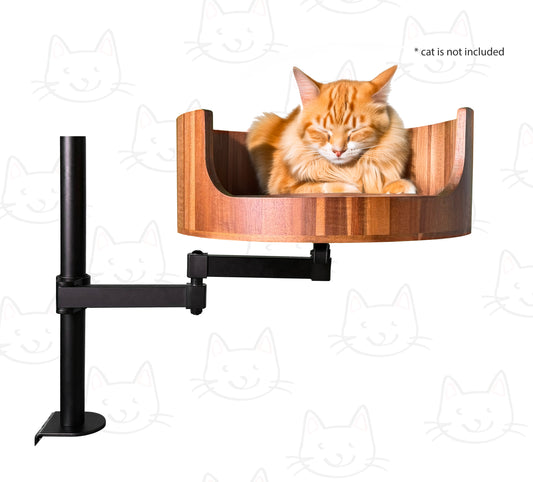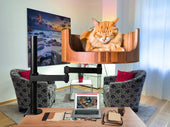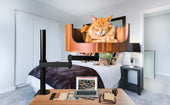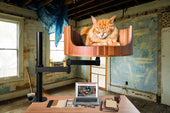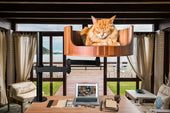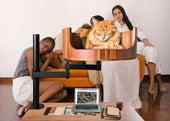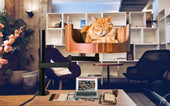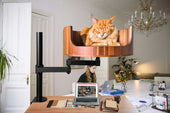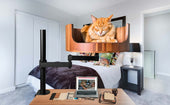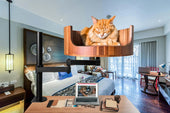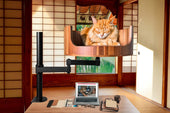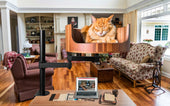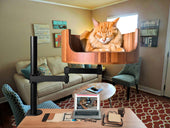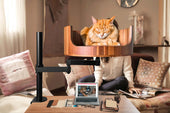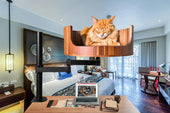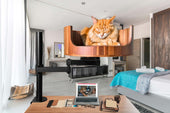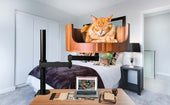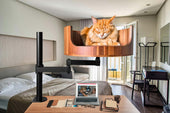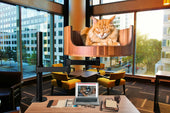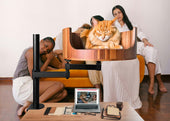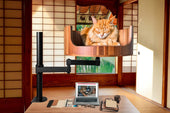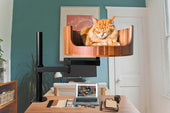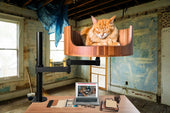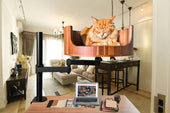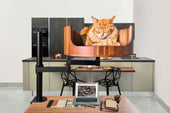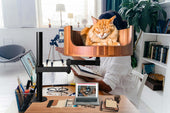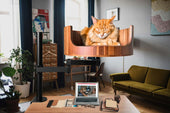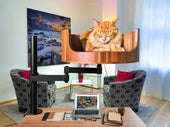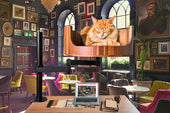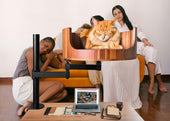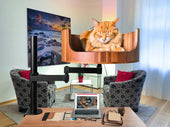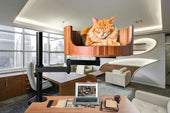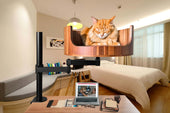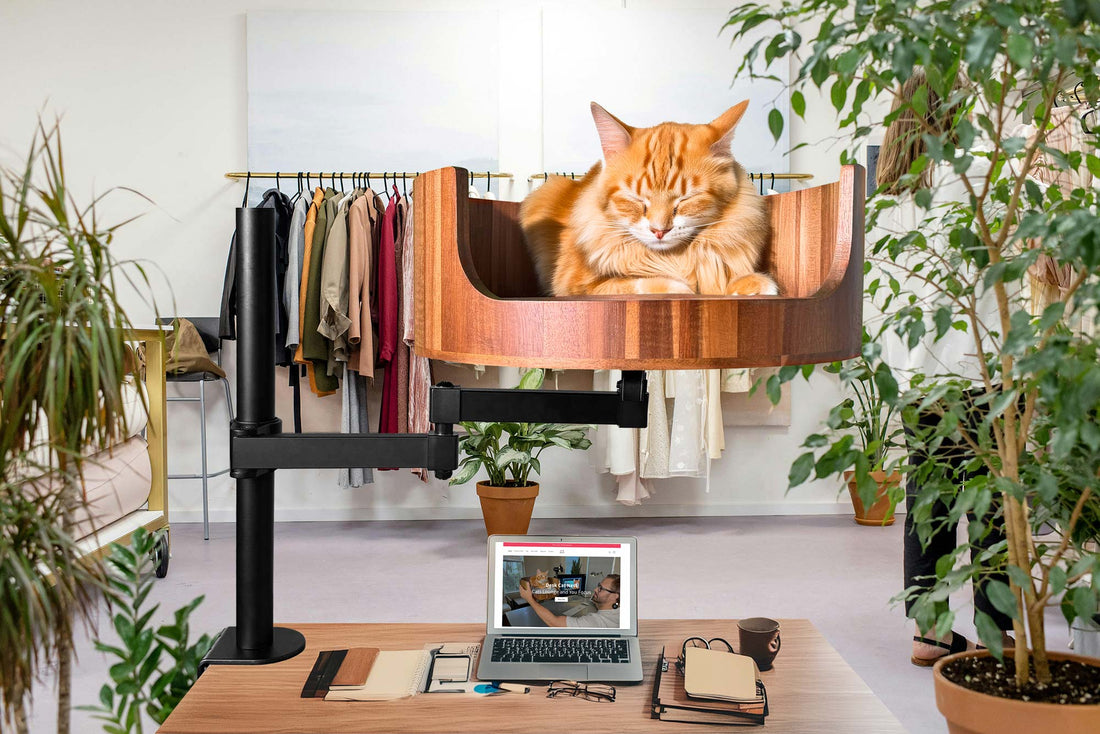
Yelled at My Cat: A Lesson in Patience and Love
Share
If you've ever found yourself frustrated enough to yell at your pet, you're not alone. In the fast-paced world of today, it can be easy to lose patience with our furry companions, even when they're just being their quirky selves. One woman, known as Desk Cat Nest on social media, recently had a humbling experience when she yelled at her beloved cat, prompting her to reflect on the lessons of patience and love.
In this article, we will delve into Desk Cat Nest's personal journey of growth and self-discovery as she navigates the complexities of her relationship with her feline friend. Through her candid storytelling, readers will gain insight into the challenges and rewards of practicing patience and unconditional love when caring for a pet. From moments of frustration to moments of joy, Desk Cat Nest will share the ups and downs of her journey and provide valuable lessons for pet owners everywhere. By the end of this article, readers will be inspired to approach their relationships with pets with renewed patience and understanding, fostering a deeper connection and bond with their furry companions.
1. Patience is key when interacting with our pets, even when they test our limits.
2. Understanding our cat's behavior and needs can help us respond more compassionately.
3. Yelling or reacting out of frustration can harm the bond we share with our feline companions.
4. Taking a moment to breathe and reassess the situation can lead to a more positive resolution.
5. Showing love and empathy towards our pets, even when they misbehave, strengthens the bond and trust between us.
## Understanding Your Cat's Behavior
Cats communicate differently than humans and may not respond well to yelling. Understanding your cat's behavior and body language can help you avoid escalating a situation. Cats may become aggressive or fearful when yelled at, leading to a breakdown in the human-cat bond. By learning to read your cat's cues and respond appropriately, you can strengthen your relationship and create a harmonious living environment.
## Positive Reinforcement Techniques
Positive reinforcement training is a more effective way to correct unwanted behavior in cats. Instead of shouting or punishing your cat, try using treats, praise, or toys to encourage good behavior. For example, if your cat scratches the furniture, redirect them to a scratching post and reward them when they use it. By focusing on positive reinforcement, you can teach your cat what behaviors are acceptable without damaging the bond between you.
## The Importance of Patience and Understanding
Patience is key when working with cats, as they are independent animals with their own personalities and preferences. Yelling can cause stress and anxiety in cats, leading to more behavioral issues in the long run. Taking the time to understand your cat's needs and motivations can help you build a strong bond based on trust and respect. By approaching interactions with patience and empathy, you can create a loving and harmonious relationship with your feline companion.
## Case Study: From Yelling to Bonding
One cat owner, Sarah, used to yell at her cat whenever he scratched the carpet. This only made the cat more anxious and resulted in more destructive behavior. After learning about positive reinforcement techniques, Sarah started using treats and praise to redirect her cat's behavior. Over time, the cat stopped scratching the carpet and Sarah noticed a positive change in their relationship. By replacing yelling with patience and love, Sarah was able to create a stronger bond with her cat and foster a more peaceful and harmonious household.
Frequently Asked Questions
Can the Desk Cat Nest help with cats who have been yelled at?
While the Desk Cat Nest cannot directly address a cat's emotional response to being yelled at, providing a comfortable and safe space for your cat can help create a calming environment for them. Cats may feel more secure and relaxed in their own cozy space, which can potentially reduce anxiety or stress from past negative experiences.
Is the Desk Cat Nest suitable for all cats?
The Desk Cat Nest is designed to accommodate most cats, but it ultimately depends on your individual cat's preferences and behavior. Some cats may be more drawn to enclosed spaces, while others may prefer open areas. It's essential to observe your cat's behavior and provide them with a space that suits their needs.
How can I prevent myself from yelling at my cat in the future?
It's important to understand that cats respond better to positive reinforcement rather than negative punishment. By reinforcing good behavior with treats, toys, and affection, you can encourage your cat to engage in desirable actions. Additionally, if you feel yourself getting frustrated, take a moment to calm down before interacting with your cat to avoid yelling or other negative behaviors.
Can the Desk Cat Nest be a part of a behavior modification plan for my cat?
While the Desk Cat Nest can provide a comfortable space for your cat, it is essential to address the root cause of any behavioral issues your cat may be experiencing. Consider consulting with a veterinarian or animal behaviorist to develop a comprehensive behavior modification plan tailored to your cat's specific needs.
In conclusion, Desk Cat Bed is a valuable choice for cat owners who have experienced being yelled at by their furry companions. This innovative product provides a comfortable and secure space for cats to rest, reducing their need to demand attention or disrupt your workflow. The Desk Cat Bed not only promotes a harmonious environment between you and your cat, but also helps improve your productivity by keeping your feline friend content and contentedly settled nearby. Say goodbye to interruptions and hello to a happier, more relaxed cat with Desk Cat Bed.

